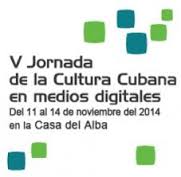It was 2004 when the first podcasts surfaced on Internet and now they have become an important alternative for the distribution of audio content on the network.
In radio, a podcast is defined as a digital audio file that anyone can create for later placement on the web, thus making it accessible to the public. It is a format that allows the syndication of audio files with an RSS (2) a system that supports subscription and automatically and periodically download.
The term syndication means it is not necessary to visit another website individually to hear the message, as the download is done directly on computer.
Podcasts can be produced using several softwares. One of the most popular is the Audacity free audio editor (http://audacity.sourceforge.net/) and others more technically complex.
In the case a podcast is made using several makers, it is highly recommended to use Levelator (http://www.conversationsnetwork.org/levelator) which automatically normalizes all voices so they canbe heard at the same volume.
Expest also suggets:
• Try to maintain a constant volume. Podcaster should pa special attention not to low ittoo much.
• When editing, remove the fragments in which there were mistakes.
• If some sound effects are going to be added, it should be done before placing the music. It should be beard in mind no to abuse them. It is much better ta few effects properly placed that an overloading thereof.
• Background music must match the story being told.
Another advice for producing the podcast is audio normalization. This technique allows operation leveling the audio so that a cry can be as audible as a whisper. It is therefore advisable the use of the Levelator software that automatically applies a filter that normalizes volume (http://www.conversationsnetwork.org/levelator), it is dstributed for free and can be found for all operating systems.
Finally, it shoud be mentioned the output format i (usually MP3) so that it can be played on any computer equipment and portable audio player. The output determines the file size, which affects the time it takes to download the podcast. If you intend to achieve value for audio / optimal file size, you should adjust the bitrate in the output options to a frequency of 96 kbps.
Just a hint on how much the file size matters: a music CD has a quality of abot 192 kbps, which would be overkill for a podcast, essentially if there is too little voice and too much music.
In Internet browsing, it is necessary to download the file (page HTML, JPG, MP3 audio, etc.) first from the remote server to the local client and then display it on the screen.
Translated by: Daysi Olano
Revised by ESTI




